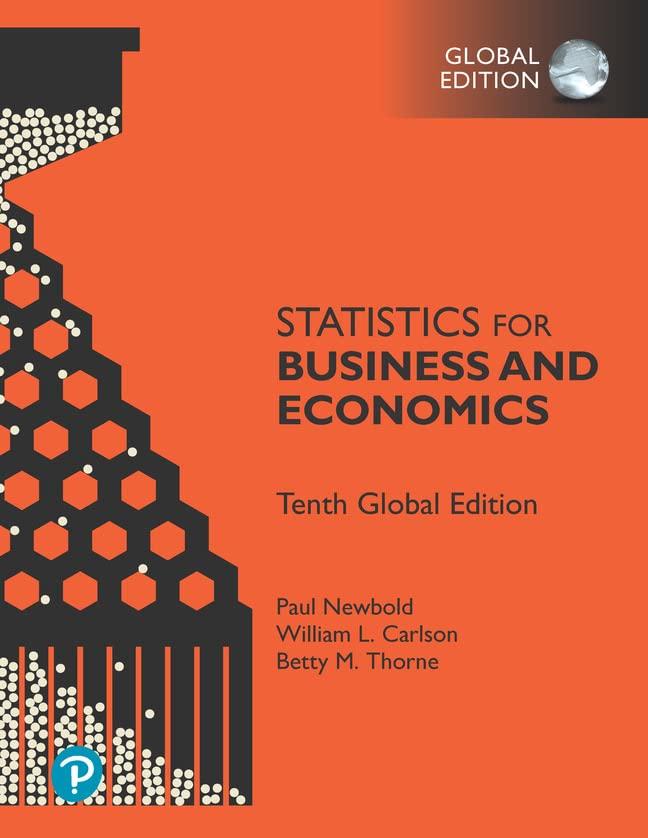An aircraft company wanted to predict the number of worker-hours necessary to finish the design of a
Question:
An aircraft company wanted to predict the number of worker-hours necessary to finish the design of a new plane. Relevant explanatory variables were thought to be the plane’s top speed, its weight, and the number of parts it had in common with other models built by the company. A sample of 27 of the company’s planes was taken, and the following model was estimated:
y = b0 + b1x1 + b2x2 + b3x3 + e where y = design effort, in millions of worker-hours x1 = plane’s top speed, in miles per hour x2 = plane’s weight, in tons x3 = percentage of parts in common with other models The estimated regression coefficients were as follows:
b1 = 0.661 b2 = 0.065 b3 = -0.018 The total sum of squares and regression sum of squares were found to be as follows:
SST = 3.881 and SSR = 3.549
a. Test the null hypothesis:
H0 : b1 = b2 = b3 = 0
b. Set out the analysis of variance table.
Step by Step Answer:

Statistics For Business And Economics
ISBN: 9781292436845
10th Global Edition
Authors: Paul Newbold, William Carlson, Betty Thorne






